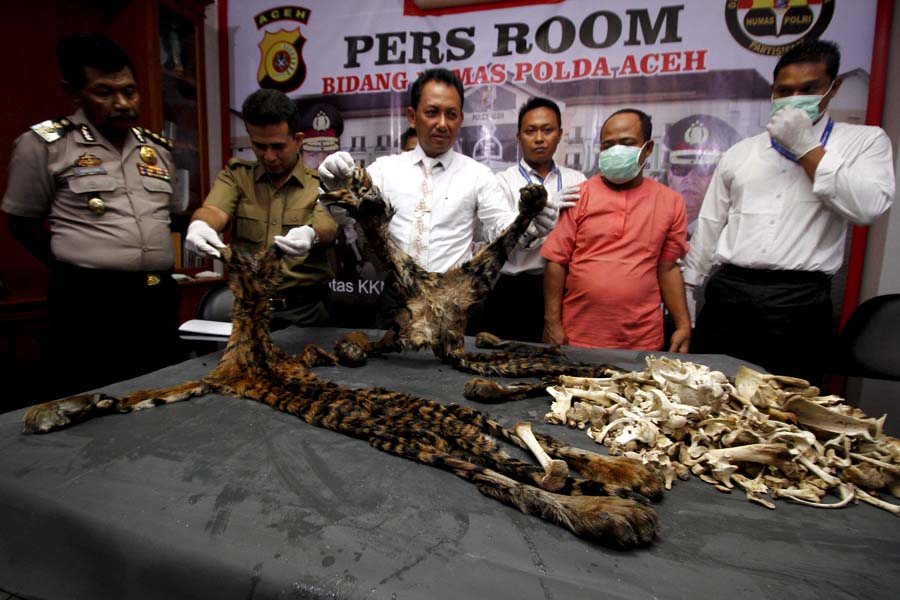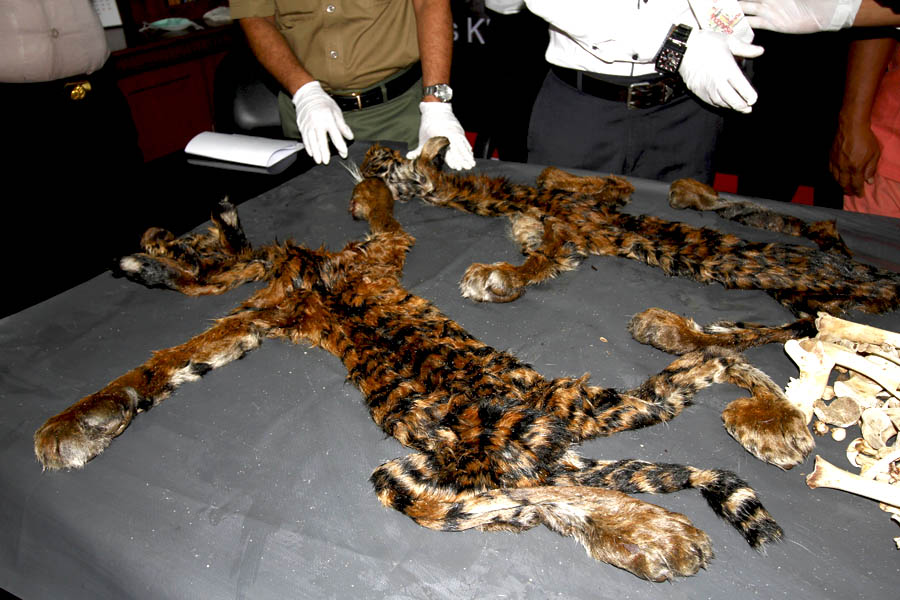- Only a few hundred Sumatran tigers still exist.
- One of the men who was caught last week was arrested for the same crime in 2014, but he only served a year in prison.
- The government has promised to revise the 1990 Conservation Law this year to allow for harsher sentencing.
Authorities in Aceh arrested two more tiger poachers last week, with investigators posing as buyers to catch the men in the act of making the illegal sale.
Police recovered two skins and a pile of bones from the Sumatran tiger (Panthera tigris sumatrae), a critically endangered species of which only around 150 are thought to remain in Indonesia’s westernmost province, with an estimated total of 300-400 across Sumatra.
“We’re worried the Sumatran tiger will go extinct like its cousins in Java and Bali,” said Genman Suhefti Hasibuan, head of the Natural Resources Conservation Agency in Aceh.
Last September, police in Aceh arrested two men with tiger skins, bones and teeth they intended to sell for 150 million rupiah ($11,300). In August, they caught four poachers in a similar bust.
“Indonesia has a wildlife emergency,” said Irma Hermawati, of the Wildlife Conservation Society. “Almost every week we catch another illegal wildlife trader.”

One of the men had been arrested for the same crime in 2014, but he only spent a year in prison.
“Sentences for wildlife crimes are still too weak,” Hermawati said. “There is no deterrent effect.”
The House of Representatives and President Joko Widodo’s administration both have said they are committed to revising the 1990 Conservation Law this year to allow for harsher sentencing, among other things.

CITATION: Junaidi Hanafiah. “Di Aceh, Harimau Sumatera Terus Diburu.” Mongabay-Indonesia. 24 March 2016.